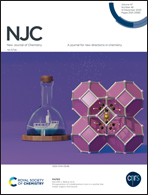Developing a biocatalyst showcasing the synergistic effect of rice husk biochar and bacterial cells for the removal of heavy metals†
Abstract
Heavy metals like cadmium (Cd) and nickel (Ni) are toxic pollutants that affect the environment and pose health risks. Removal of Cd and Ni through bioremediation in the presence of biochar is a sustainable strategy. This study investigated the removal of Cd and Ni by Pseudomonas stutzeri immobilized on rice husk biochar (PRHB). The removal efficiency was calculated by varying the culture incubation time, pH, temperature, biocatalyst dosage, and initial metal ion concentration. PRHB showed a maximum metal removal capacity of 95% Cd and 92% Ni. The removal efficiency of PRHB was higher than that of free cells, which could be attributed to simultaneous adsorption, ion exchange, complexation, precipitation, and bioaccumulation caused by the biochar carrier and bacteria. The rice husk biochar material served as both an adsorbent and a carrier supplying nutrients for the growth of the bacteria. Considering the excellent metal ion removal capability and reusability, the use of PRHB could be a promising, cost-effective, and environment-friendly strategy for treating wastewater containing heavy metals.



 Please wait while we load your content...
Please wait while we load your content...